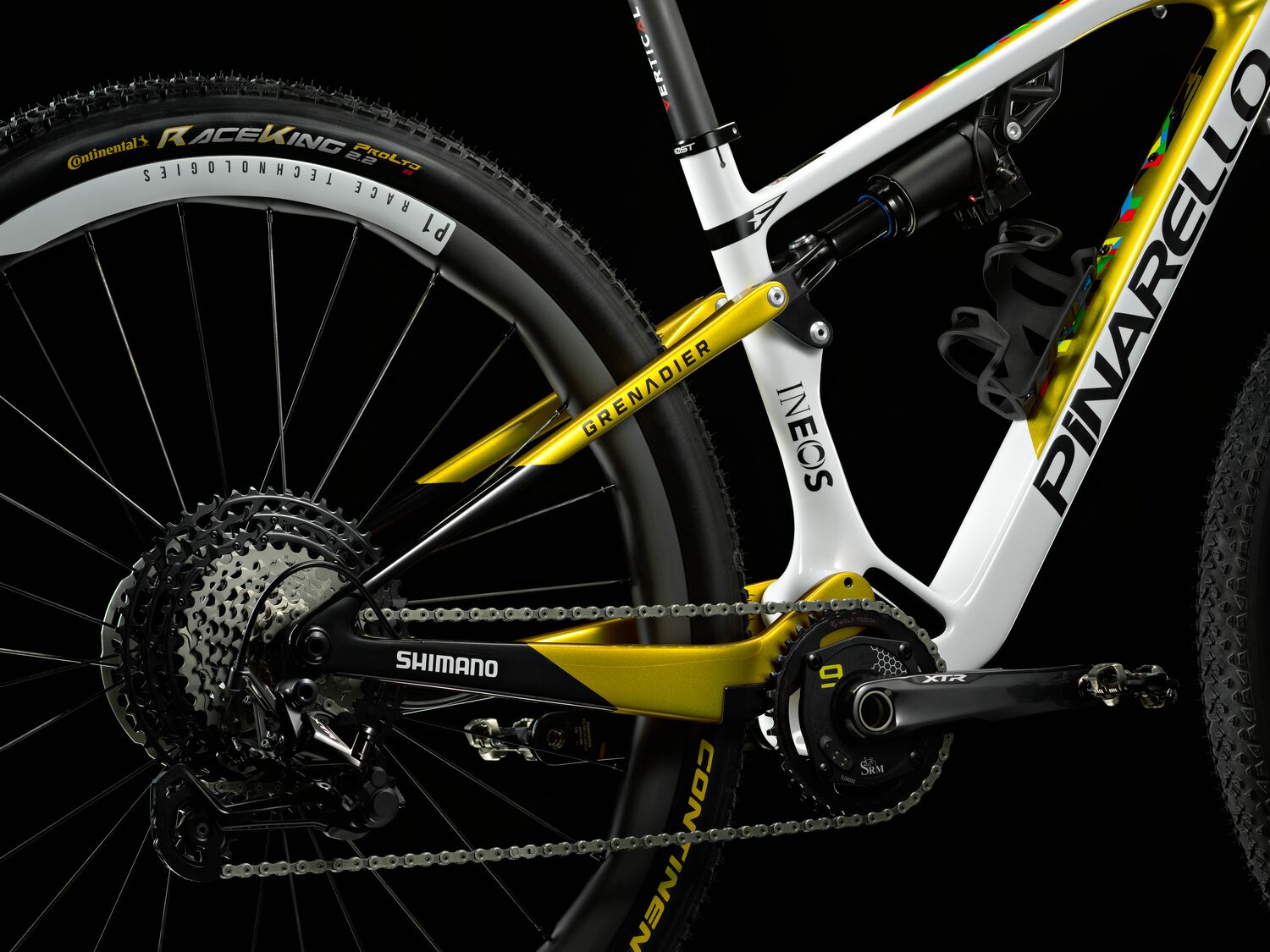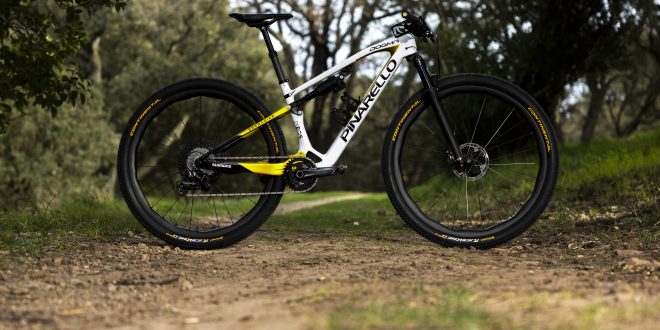Pinarello is set to re-enter the mountain bike market, with the Dogma XC in development with the Ineos Grenadiers Team.
Pauline Ferrand-Prévot and Tom Pidcock will be competing on the full suspension Pinarello Dogma XC development bike at the opening round of the UCI Cross-country World Cup in Nové Město, Czech Republic, on 11th – 14th May.
As part of the Italian brand’s renewed focus on MTB, Pinarello began developing the bike in autumn 2022 and underwent a period of testing with Ferrand-Prévot, Pidcock and the Ineos Grenadiers’ technical team.
Further testing will take place throughout 2023 with both riders continuing to be heavily involved in its development.
The Dogma XC will be available commercially in March 2024 and there is a second, front suspension frame also being developed to meet the demands of other World Cup circuits.
With the recruitment of a dedicated internal MTB R&D and kinematics team, development on the Dogma XC began with Pinarello analysing Pidcock’s feedback and data from his two previous years of mountain bike testing and competition.
The study highlighted the requirements Pidcock felt were needed to produce a race bike capable of competing at the highest level and able to withstand the powerful riding styles both he and Ferrand-Prévot deploy.
The requirements were as follows:
- Extreme stiffness in the rear triangle and bottom bracket to offer maximum reactivity
- Simple yet progressive kinematics to optimise travel and rebound
- The ability to match suspension travel to the unique demands of each circuit
- Lightness paired with exceptional drive and handling capabilities to excel on technical descents
Those findings resulted in Pinarello working the following key elements into the Dogma XC’s design:

Unique bottom bracket area
The unique design of the bottom bracket area optimises stiffness and accommodates an oversized bearing and pivot point for the rear triangle.
Flex stays
Theoretically, having just three pivot points on the rear triangle typically inhibits rear wheel travel, but the Dogma XC’s unique geometry and integration of flex stays combine to enable travel in a more direct manner. These innovations also save weight, improve stiffness, and deliver an improved connection between rider and rear wheel.

Split rear triangle
The rear triangle comprises two distinct semi-triangles fitted to a main rotation point using a unique design where two pins are moulded to the carbon frame (patent pending).
This results in the elimination of an external ‘bridge’ which allows for a reduced chain stay length and delivers improved handling and reactivity
It also reduces the amount of mud accumulation in critical areas and the ability to adopt wider tyres

Kinematics
The rear suspension kinematics take the integration of flex stays into account to maximise energy transfer while pedalling, deliver optimal compression/rebound on technical descents, and enable maximal rider control.
Friction at each pivot point has also been minimised by utilising a mixed bearings/bushing system.
Bushings have been incorporated at point ‘a’ as they are durable enough to absorb the high impact and low rotational forces placed upon them, whereas bearings have been integrated at point ‘b’ where the opposite forces apply (low impact/high rotation).
This results in reduced energy dispersion, increased reactivity of the rear end, and increased durability of the system.
Anti-rise and anti-squat values have also been studied to create a bike which excels on both the steepest climbs and most technical descents.

Adjustable travel
The ability to move the suspension connection point under the top tube allows different rear shock absorbers to be fitted, with different travel, allowing the riders to match their bike to the unique demands of each ride.
Cockpit
The custom designed, fully integrated cockpit saves weight and offers increased driving precision compared with a two-piece alternative. Fully integrated cable routing is also incorporated, as is a specific headset bearing which features an internal stopper at 60° to prevent the handlebar from over-twisting.

Asymmetry
The rear triangle utilises a patented asymmetric design with the left-hand side being reinforced, allowing the bike to counterbalance the higher forces applied to it on the opposite side of the drivetrain. This results in balancing energy transfer, improved speed and traction.
Read more: Specialized reinvents the tyre with new S-Works Mondo
Technical specifications
- Carbon fibre front and rear triangle, Ergal aluminium hardware
- Asymmetric frame
- Split rear triangle design (patent pending)
- Seatpost diameter: 30.9mm
- Seatpost compatible with seatpost dropper & internal cable routing
- Geometry developed for double travel setup:
– Front: 100mm – Rear 90mm (with 190x45mm rear shock)
– Front: 120mm – Rear 100mm (with 210 x 50mm rear shock) - Standard mount rear shock with 90° inverted fixing points
- Transmission 1×12 compatible, chainrings 32 T or 40 T
- Chain line: 55mm
- Maximum crankset arm length: 175mm
- Compatible with Stages power meters
- TiCr internal cable routing
- TiCr integrated headset with 60° internal stopper
- Boost Standard, 12mm diameter conical thru axle, compatible with UDH
- Standard flat mount 160mm, compatible with 180mm (adapter needed)
- Maximum tyre clearance: 29 x 2.35 inches
- Two bottle attachments
 BikeBiz Bicycle and cycling retail news
BikeBiz Bicycle and cycling retail news




